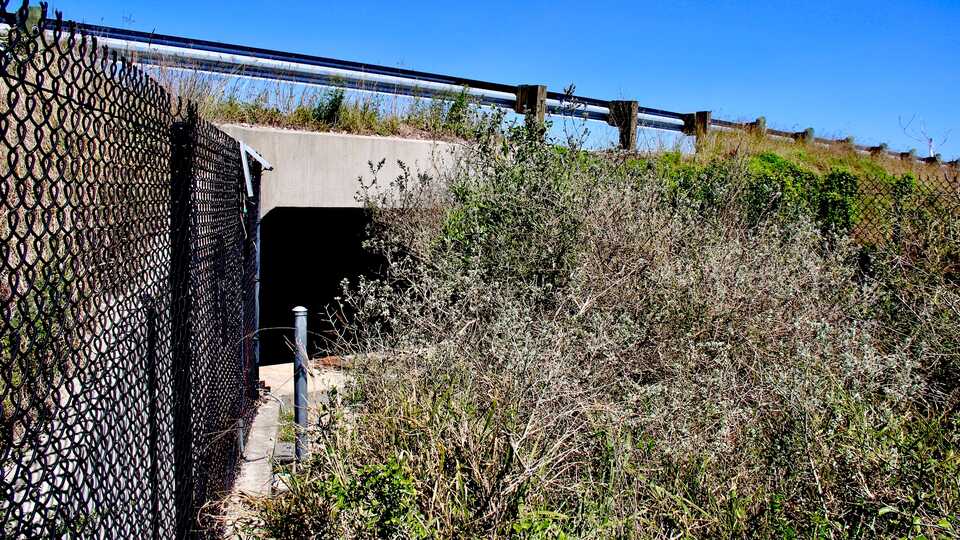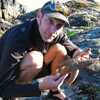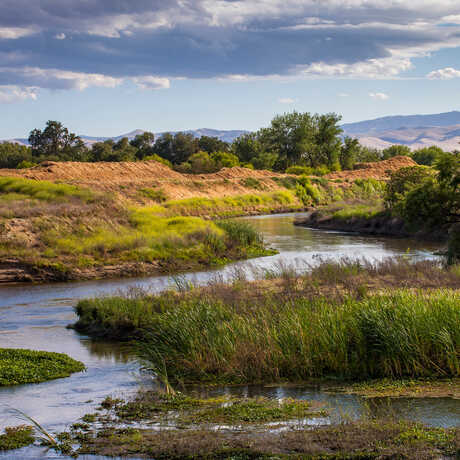Ocelot Country

As its name implies, the South Texas thornscrub is not so much a landscape you saunter through as one you may ultimately have to fight your way out of. Unless, perhaps, you’re an ocelot (Leopardus pardalis). This diminutive wild cat seems to effortlessly glide through the smallest of openings in the scrubby habitat it calls home, and in so doing more or less escaped detection across the region for decades.
Environmental journalist Ben Goldfarb learned that lesson firsthand as he followed local biologists into the field earlier this year to learn more about the ways of this species—the most endangered feline in the country—and what’s being done to reduce the threats it faces. The story is the first in a series of articles by Goldfarb for bioGraphic magazine that will focus on the impacts of human infrastructure on wildlife populations, and solutions that are helping to reduce those effects.

Photo: Ben Goldfarb

Photo: Ben Goldfarb
I spoke with Goldfarb earlier this week to hear more about his experiences reporting the story, and his takeaways from those experiences.
In rural South Texas, the writer encountered countless armadillos; bewildering herds of nilgai, a giant Asian antelope once introduced to the region as an exotic big game animal, but now roaming feral; and roadkilled animals such as opossums, raccoons, and bobcats tagged with orange paint like pieces in a macabre art installation. More importantly, he explored the strange history and the status of current efforts to reduce the threat that road crossings pose for ocelots.
Roadkill makes up an estimated 40 percent of the species’ mortality in the U.S. And while that toll would be significant regardless, as Goldfarb explains in the story, it can have outsized impacts on predators—particularly those with populations as small and isolated as this one.

Of all people, Goldfarb would know about the impacts of roads on wildlife.
For the past half-decade or so, he has been investigating the persistent and growing influence of human transportation infrastructure on wildlife movements for his latest book: Crossings: How Road Ecology Is Shaping the Future of Our Planet (W.W. Norton & Co.).
What intrigued the writer about the ocelot's story and what he wanted to explore more fully for bioGraphic is the strange mismatch between where wildlife crossings had been constructed in South Texas for decades, ostensibly to benefit ocelots, and where the cats actually lived. That mismatch is slowly being corrected as biologists identify key ocelot habitats, as well as where the animals might need to disperse to ensure the longevity of their populations.

Photo: Ben Goldfarb

Photo: Ben Goldfarb
Fortunately, as Goldfarb discovered during his field reporting, effective crossings needn’t be elaborate or pretty. In fact, overgrown entrances to wildlife underpasses may be just what wary cats need to feel secure enough to cross a highway safely. Still, as vital and effective as wildlife crossings may be for South Texas ocelots, they’re also not sufficient.
So what will it take to sustain America’s rarest cat? Learn more about what scientists and conservationists are doing to protect ocelots in the region and what more might be necessary to bring the species back from the brink in bioGraphic’s latest feature story, “No Country for Old Ocelots.”
Reporting for this story and Goldfarb's series of articles about the impacts of human infrastructure on wildlife was made possible in part by the writer's Osher Fellowship.



